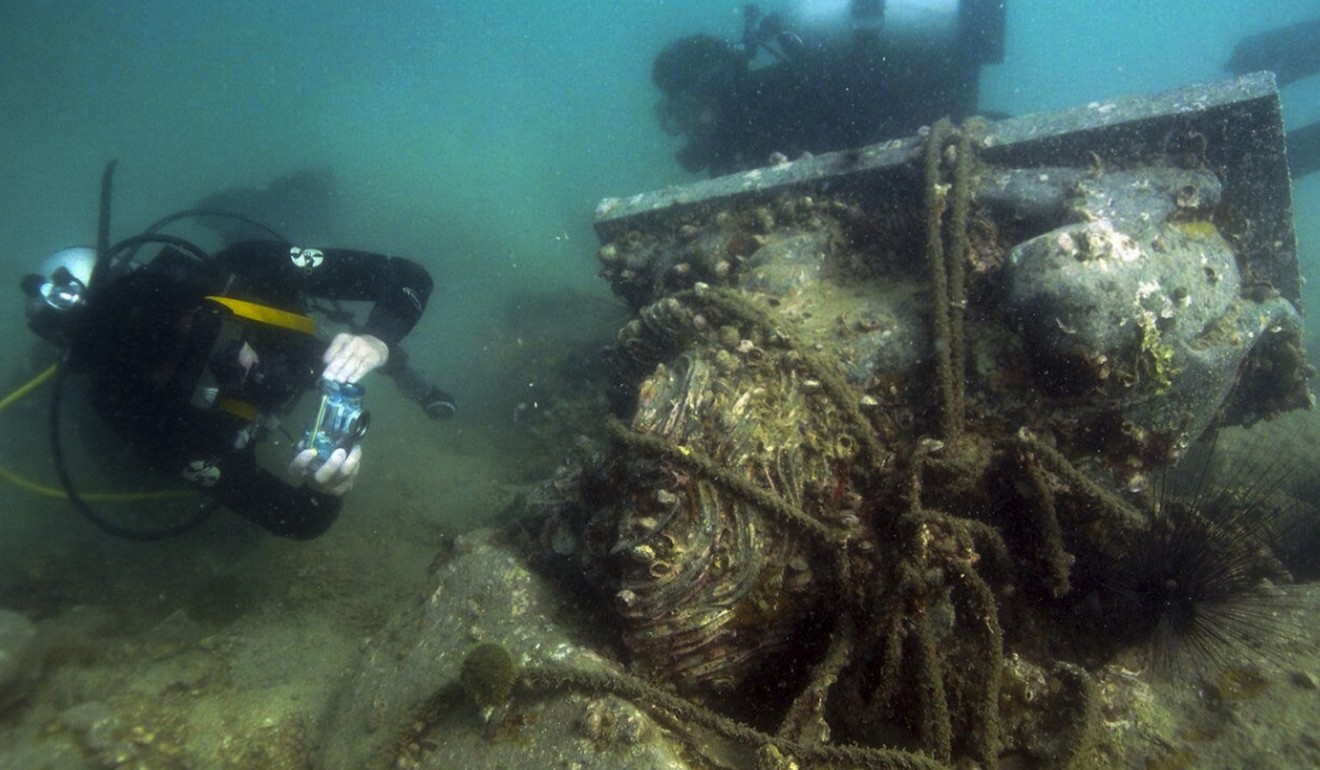
Preserve underwater relics of Hong Kong’s past as a 19th-century sea trade hub or risk losing them to reclamation, say Chinese University scholars
- Scholars call for independent body to keep artefacts safe
- ‘Hong Kong is lagging far behind ... and the government has no interest in this’
Submerged relics of Hong Kong’s past as a 19th-century sea trade hub and pirate hideout need to be investigated and preserved or risk being buried forever beneath a huge reclamation project off Lantau Island, a Chinese University scholar has said.
The university’s associate law dean Professor Steven Gallagher called for an independent expert body to be formed to keep the artefacts safe.
“People in Hong Kong are interested in heritage. We have seen that in various things that were going on ... [But it] has always been focused on the terrestrial because that’s what you can see,” Gallagher said.
The professor said that, to promote public awareness, the university was organising a legal history seminar on underwater cultural heritage protection in February next year.
In October, Chief Executive Carrie Lam Cheng Yuet-ngor announced a controversial plan to create 1,700 hectares of artificial islands to Lantau’s east, to house 1.1 million people.

The new metropolis, estimated to cost HK$500 billion or more, would be near smaller islands such as Hei Ling Chau, Peng Chau and Kau Yi Chau.
Critics have said the plan could drain the city’s fiscal reserves, but Gallagher said underwater history was also at stake.
“We know that Lantau has been being used for centuries ... and at one point it was meant to be a pirate hideout. So there’s a high likelihood that there will be things of interest found there, and reclamation is a problem,” he said.

The professor noted archaeological sites were also found near the island’s shores when the Disneyland resort and Hong Kong International Airport were built .
This was because Lantau, and the islands to its east, sat along a major sea trade route between Southeast Asia and Guangzhou, then known as Canton, he said.

“The vessels coming in from all over Southeast Asia came past here. These islands were known for water [and] supplies,” Gallagher said.
“If [merchants] had to go to Canton ... they might land some of their cargo coming past these islands.”
Gallagher added that, in theory, the government needed to do a heritage impact assessment to make sure historical relics, including those underwater, would not be damaged by any public works.
That rule was introduced in 2007. Since then, more than 30 heritage impact assessment reports have been submitted for various projects, including the work to turn a former police married quarters in Central into PMQ, the arts and design hub.
Japanese paper sparks fury over changed definition of ‘comfort women’
But critics have questioned the system’s effectiveness, with the reports being eventually scrutinised by development authorities, with no final say for bodies such as the Antiquities Advisory Board and the government’s Antiquities and Monuments Office.
Gallagher said: “[The assessment report] is just referred to government departments and there should be more transparency.”
He proposed that an independent body oversee the results of such assessments.
“[The body should] work with the government to consider what should be done next,” he said.
Gallagher said he hoped in the long run Hong Kong would follow mainland China and South Korea’s footsteps by investing in the identification and conservation of cultural heritage in the city’s waters.
“Hong Kong is lagging far behind ... and the government has no interest in this,” he lamented.
A spokeswoman for the Development Bureau said the reclamation project would require an environmental impact assessment (EIA), including an assessment of any impact on cultural heritage sites.
If there were threats to such sites, the government would have to recommend mitigation measures and canvass public opinion.
The government's environmental protection director would then take into account public comments and the views of the authorities, including the Advisory Council on the Environment, in considering whether to approve the EIA report, the spokeswoman added.

